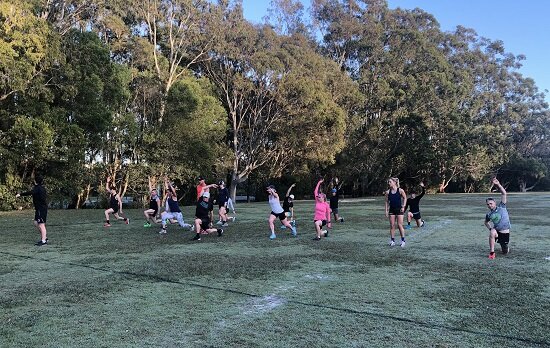Strength Training Sequencing
It doesn’t seem that long ago that I was writing part of my thesis on this topic as we tried to figure out the best way to improve swimming performance through strength training. It has been 14 years since then and I’ve yet to follow this up with a doctorate, but here is my science/research driven opinion on the timing of strength training for endurance athletes.
Preface:
We often have dilemmas within Triathlon of trying to fit three disciplines plus strength training and recovery modalities into a training schedule, be that within a micro or macro cycle. The reality is we can’t make gains in all three disciplines at once. So, we have to prioritise within our schedule what the focus is - what comes first and last within our training day and how that might adjust throughout our annual plan.
Strength Training in the Annual Plan:
We know from many podcasts, blogs and scientific research papers that plyometrics and strength training can improve performance via changes in economy and reducing injury frequency by creating a more balanced body. We also know that recovery from these sessions can take between 24-48 hours more than a high intensity run session. So the impact on other training can be quite high, as reflected in this study where the time to exhaustion in running was significantly impacted by strength workouts performed 6 hours previously.
Therefore, from a macro cycle point of view, the important time to make strength training a focus is during your initial base building phase, when the impact on Zone 1 and 2 swim, bike, run training doesn’t matter as much. The key consideration here is to make sure you aren’t putting yourself at injury risk. Long runs and technical runs post a strength/plyometric workout should be reconsidered.
As we grow into the season, we need to move through to more maintenance work but make sure we continue on with gym work which will help us maintain good range of motion plus strength in that range of motion.
Sequencing:
As we’ve alluded to above, the impact of strength workouts on endurance performance is significant. But conducting a five-hour ride or long run, then expecting to perform maximal lifts in a gym is not going to create maximal gains from the gym session.
If enhancing strength is your priority within your annual plan, then considering light aerobic work as a warmup to the gym is appropriate. This could include range work and drills for running, a very easy ride or easy technique driven swim. Then into the gym for a good lift, before maybe another light aerobic session that day.
If your gym sessions are more about developing range, strength endurance, a balanced body, stability and core strength then research has shown the sequencing of endurance work followed by strength work is the most beneficial to see improvement in both VO2max and strength and aerobic power. You can even do a very solid work out (swim, bike or run) before these gym sessions and, with good nutrition for recovery, back up well in the gym.
The areas of gym work above are definitely a main focus for many triathletes and something that we like our FITTER athletes to be doing on a consistent basis. It reduces the incidence of injuries, gradually improves strength, enhances transfer of power and develops a greater range of motion.
Tim Brazier | June 2020


